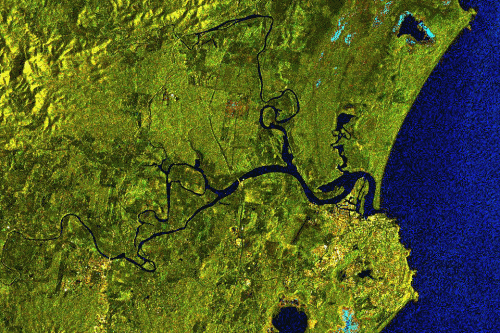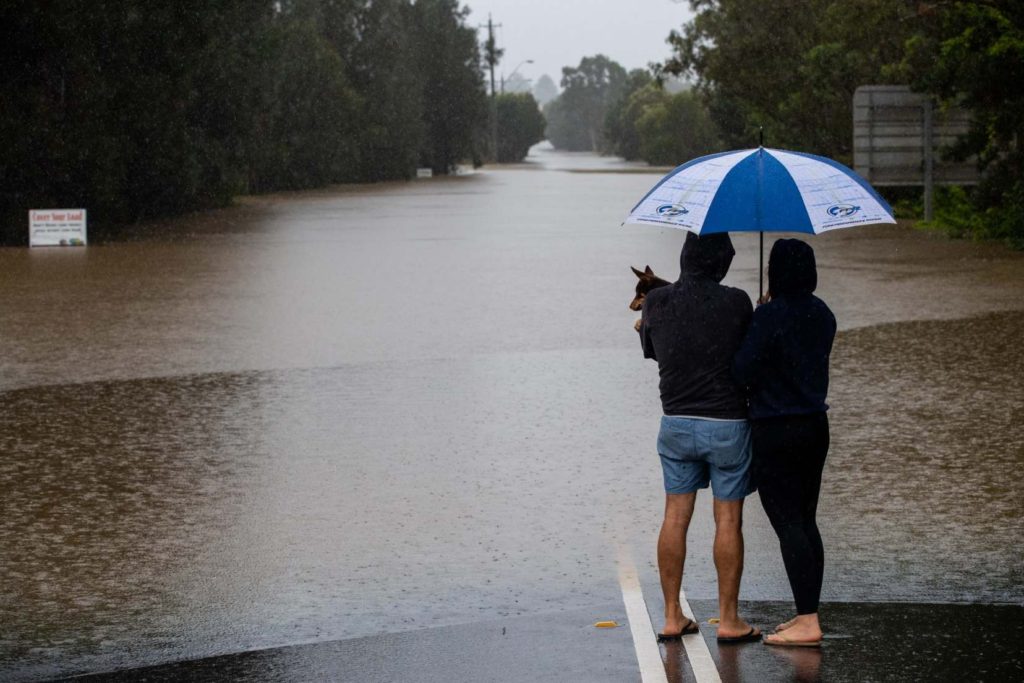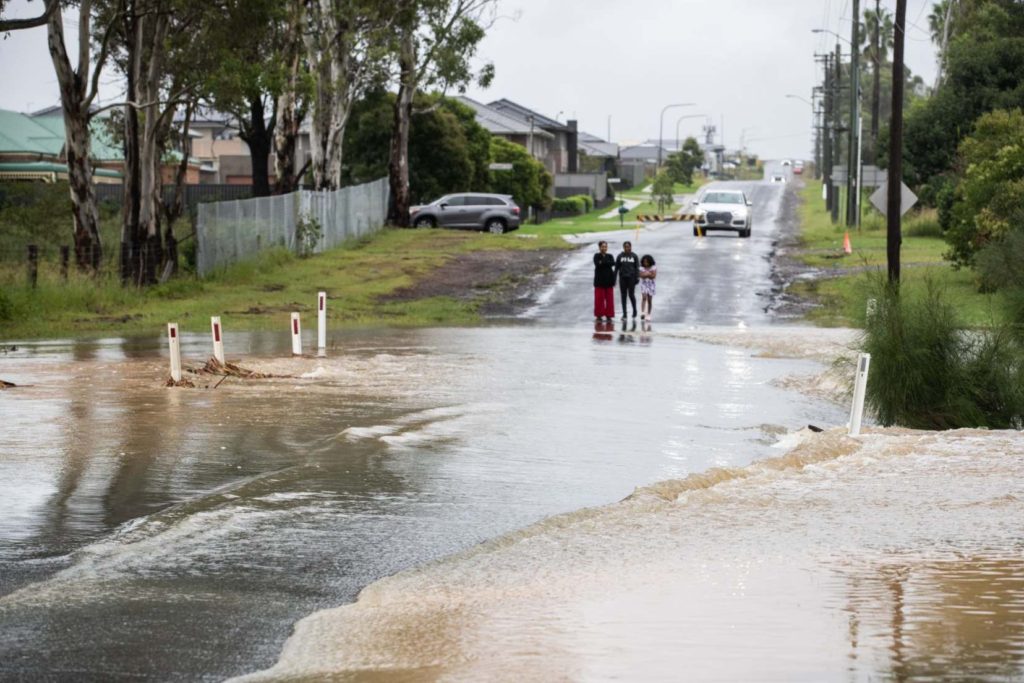Heavy rains in Australia’s east bring worst floods in 50 years – “Yesterday, we were hoping it will only be a one-in-20-year event, now it looks like a one-in-50-year event”

By Angus Thompson, Rachel Clun, and Lucy Cormack
21 March 2021
(Sydney Morning Herald) – The collision of two powerful weather systems over the east coast of NSW on Monday night may see more evacuations as western Sydney residents were forced to flee to higher ground on Sunday when floodwaters inundated their neighbourhoods.
The State Emergency Service ordered about 1000 residents from western Penrith, Jamisontown and Mulgoa to pack up and leave, or forced being trapped by rising floodwaters.
NSW Premier Gladys Berejiklian warned up to 4000 people could be displaced in the Hawkesbury-Nepean Valley over the next few days.
Almost 140 schools have closed, roads and bridges have been cut off, the COVID-19 vaccine rollout has been delayed in parts of Sydney and NSW because of the extreme weather, and supplies to supermarkets have also been impeded. There were about 700 flood rescues since Thursday, and 180 in the last 24 hours, and 7680 calls for help since Thursday.

Later on Sunday, Newcastle Airport also suspended flights because of flooding on the runway, warning the airfield could remain closed until Wednesday.
Ms Berejiklian said parts of western Sydney is experiencing a one-in-50-year weather event. Various parts of the Hawkesbury-Nepean river network is causing concern as the Warragamba Dam – which will see 75 per cent of its storage capacity flow into the catchment from the event – continues to overflow.
“What we’re going through now is different to what you’ve been through for the last 50 years, so please take it seriously,” the Premier said on Sunday afternoon.
“It’s the sustained rainfall, the fact that weather event has settled in, it’s not moving on, and also of course the capacity of the [Warragamba Dam] spill over and what that might mean. Obviously when it’s a one-in-50-year event, in terms of the amount of rainfall, and the sustained rainfall, it has a huge impact.”
Ms Berejiklian said dam levels would have had to be reduced to around 20 or 25 per cent to account for the upcoming rainfall.

Emergency Services Minister David Elliott announced 16 national disaster declarations for communities throughout NSW had been signed off by his federal counterpart Minister David Littleproud.
“From today (Sunday) we commence the recovery phase. So those national disaster declarations will mean that residents affected by these floodwaters can begin to receive that assistance,” Mr Elliott said. […]
Meteorologist Rob Taggart said the meeting of a low pressure system from the north-west and a high pressure system over the Tasman would create a “last blast” of rain and storms for the extreme weather event that would continue until Wednesday, and continue to affect people on floodplains, including in western Sydney, until the end of the week.
He said it would also cause further misery for residents of the Mid North Coast of NSW, who have already seen widespread damage, and urged people on the South Coast – who are seeing levels of flood watch and warnings – to be vigilant.
He said parts of Sydney could see another 150 millimetres of rainfall over the next 48 hours.
“The average case is 100 millimetres widespread – that will see river rises: The landscape’s so saturated, any rainfall you get runs straight into the river.” [more]
Thousands could be evacuated as western Sydney residents forced to flee

Heavy rains in Australia’s east bring worst floods in 50 years
By Lidia Kelly
21 March 2021
MELBOURNE (Reuters) – Heavy rains along Australia’s east coast over the weekend have brought the worst flooding in half a century in some areas, authorities said on Sunday, forcing thousands to evacuate and damaging hundreds of houses.
New South Wales Premier Gladys Berejiklian said the downpour across the state, Australia’s most populous with 8 million people, was worse than initially expected, especially for low-lying areas in Sydney’s northwest.
“Yesterday, we were hoping it will only be a one-in-20-year event, now it looks like a one-in-50-year event,” Berejiklian said at a televised briefing.
People in parts of Sydney’s northwest were ordered to flee their houses in the middle of the night as fast-moving waters caused widespread destruction. Late on Sunday, about another 1,000 people were asked to evacuate, after Berejiklian said that some 4,000 people may be asked to leave their houses.

Television and social media footage showed fast-moving water unmooring houses, engulfing roads, breaking trees, and damaging road infrastructure. Emergency services estimate the total number of damaged houses to be “in the hundreds”. […]
Several dams, including Warragamba, Sydney’s main water supply, spilled over causing river levels to surge.
Meteorologists said the downpour is set to continue for several days. Emergency crews have responded to about 6,000 calls for help since the start of the rains on Thursday, including nearly 700 direct pleas for rescue from floods.
The extreme weather has also affected Australia’s COVID-19 vaccine delivery to across NSW, disrupting the country’s plans to deliver the first doses to almost 6 million people over the next few weeks. [more]
Heavy rains in Australia’s east bring worst floods in 50 years


